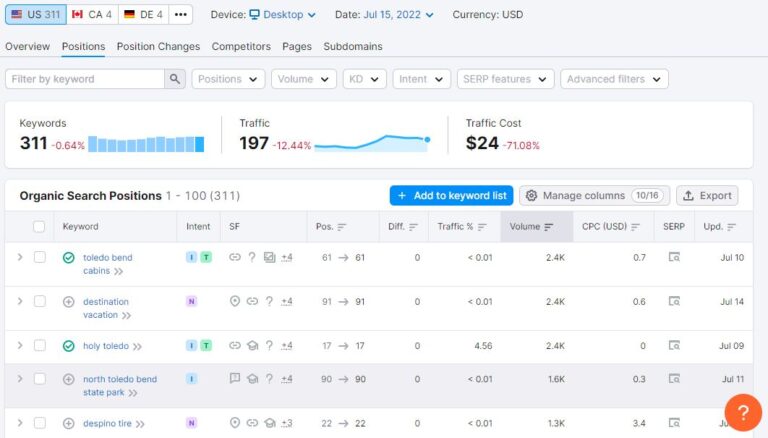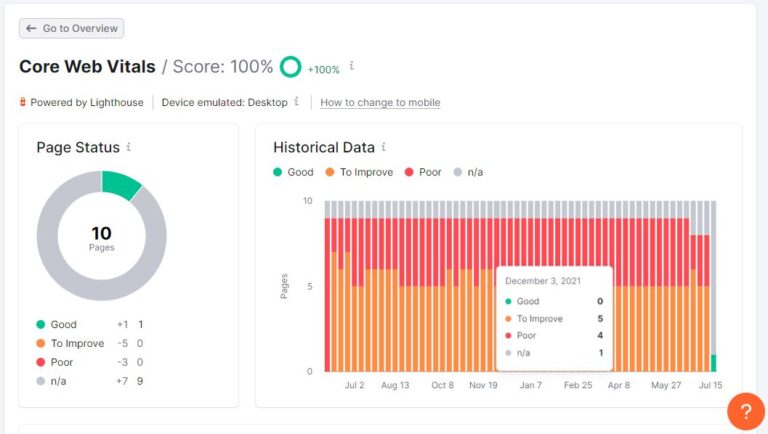MOZ defines Search Engine Optimization, or SEO, as a “set of practices designed to improve the appearance and positioning of web pages in organic search results.”
Nowadays, businesses need an online presence, whether a website or a social media page. This also means that you need to practice SEO.
How SEO Works
Organic search is the common way for people to discover your brand and access your content. This means that people would often go to a search engine, such as Google, and type in a query that is relevant to your business.
A query is a set of keyword or phrases that you would want to rank for and incorporate in your content. If you are doing SEO right, your website should appear on one of the search results.

But how is it possible?
First, search engines like Google and Bing have crawlers called bots or search engine spiders. What they do is crawl a website and follow specific trails like internal and external links.
These links, in addition to the context of your web content, help bots understand what the page is about. This includes knowing how they relate to your website’s other pages and the content in a search engine’s massive database.
Understanding the relationship of various content across the Web is called indexing.
When you type in a query on Google, the search engine will use complex algorithms to pull information from its database. This information is deemed relevant to what you are looking for. They will also rank these results based on various ranking factors.
Ideally, you would want your website to rank #1 on the first page of search engine results. After all, ranking #1 can help you generate a 39.6% of click-through rate. This means that 4 out of 10 people who saw your website as a top 1 result are likely to click it and land on your website. However, it is not always the case.
Three Components of Search Engine Optimizations
To properly optimize your website and ensure that it will rank well on search engine results, it is essential to understand the three components of SEO:
- On-page SEO. This approach lets you focus on the content that exists on your website. This includes incorporating your target keywords in your web content and having an internal linking system.
- Off-page SEO. This refers to any optimization activities outside of your website. An excellent example of this is generating backlinks from other relevant websites.
- Technical SEO. This SEO approach focuses on your website backend. We are talking about structured data, image compression, and tactics that can help your website load faster.
6 Steps to Building an SEO Strategy That Works
Now that you know the different SEO components, it is time to build an effective SEO strategy for your business.
However, remember that SEO is best applied if you have a website. After all, you cannot optimize other websites. Although you can still build a robust SEO strategy by studying how your competitors structured their websites.
STEP 1: Conduct an SEO Audit
Before you build an SEO strategy, it is vital that you know where your business stands. This is where an SEO audit comes in.
This process allows you to evaluate your business website’s online visibility and how you compare against your target competitors. You can use tools, such as SEMrush, to help audit your website’s search engine friendliness.
If you do not own a website, you can still use the same tools to analyze what your competitors are doing. Your competitor’s SEO audit can help you build a business website that is better than theirs.
STEP 2: Find the Right Keywords
After figuring out what SEO tactics your competitors are using, the next step is to conduct keyword research. It is discovering the search queries your target users are typing on search engines to look for your products or services.
However, this is also the part where business owners tend to fail. That’s because they think they already know their target customers’ keywords. Please do not fall into this common mistake. Instead, use keyword research tools to help you determine what keywords to target.
If you already own a company website, you can use Google Search Console to determine what keywords your site visitors use. What’s cool about the GSC dashboard is that it can show how you rank for certain keywords.

On the other hand, you can run a competitor’s website on SEMrush and see which keywords they are ranking for. What’s great about this SEO tool is that it indicates the intent behind a search query. This eliminates the guesswork on your end when trying to figure out whether a keyword is meant to build brand awareness or improve sales.

Keywords are integral in your SEO as they can help your content appear on relevant search results. However, you should also ensure that your content is related to the search query. If users typed in “cabin rentals in Toledo Bend,” they are likely looking for a list of cabins for rent in the area. It will be frustrating for them if they cannot find that content on your website.
STEP 3: Optimize for On-page SEO
This is where your SEO audit will become helpful. Depending on your findings, the next step is to optimize your on-page SEO efforts.
As mentioned earlier, on-page SEO deals with SEO elements within your website. This includes incorporating your target keywords into your content, including Meta titles and descriptions. Doing on-page SEO is straightforward, especially if you are using WordPress as a website backend. That’s because you can install plugins like Yoast SEO to optimize every page on your website.
On the other hand, business owners without a website can leverage SEO audit to determine how they can best layout their on-page SEO approach. This includes choosing the web pages they must focus on, creating content topics that can bring in a high volume of web traffic, and creating an internal linking system.
STEP 4: Optimize for Off-page SEO
You can choose to do on-page and off-page SEO simultaneously or do this step once you are done resolving your on-page SEO issues.
Regardless, your SEO audit should include backlinks analysis. This report indicates which websites are linking to you and whether they are toxic.
Your backlink analysis can help determine if you receive links from a relevant website. Preferably, you would want to receive links from authoritative websites with a niche like yours. If you own a cabin rental business, you want to get backlinks from travel websites or tourism information centers.
The key here is to build relevant links. You also want to ensure that these websites use the correct anchor text. It is a clickable text that allows readers to be redirected to another page or a different website.
What should you do when your website is receiving backlinks from shady websites? You can request for removal or disavow it altogether. Doing so prevents search engine crawlers from associating your website with these untrustworthy sources, which is detrimental to your SEO efforts.
Meanwhile, those who do not own a website yet can run a backlink analysis on their competitors. That way, you would know who to reach out to when you are ready to build links.
STEP 5: Optimize for Technical SEO
Ranking at the top search engine result is more than just incorporating keywords on your content and building relevant links. You should also pay attention to your website’s user experience.
To do that, you need to watch out for the Core Web Vitals report, which you can find on Google Search Console or SEMrush.

Google describes it as a report showing how your website performs based on real-world usage data. The Core Web Vitals has three components that deal with a website’s page speed and user interaction:
- Largest Contentful Paint. This refers to the time it takes to wait for your web content to load after clicking a link.
- First Input Delay. FID measures the time it takes for a website visitor to interact with your page.
- Cumulative Layout Shift. This deals with “visual stability” or a page’s stability as it loads.
Mind you; Google pays close attention to your website’s usability. Hence, it is advisable to check your website’s Core Web Vitals and follow the recommendations listed on Search Console. Doing so ensures that your website provides the best UX, which can impact your SEO efforts.
STEP 6: Monitor and Improve
Your SEO efforts are not yet done once you have implemented all the necessary changes. You must regularly monitor your website’s performance to know if your existing strategy is working.
Some of the metrics you should look out for are the following:
- Domain authority
- Keyword ranking
- Click-through rate
- Website traffic
- Bounce rate
- Backlinks and referring domains
- Page speed and Core Web Vitals
- Conversion
What SEO metrics to measure will depend on your goals. You can use Google Analytics and Google Search Console to monitor many key performance indicators.
15 Must-Have SEO Tools for Business Owners
Knowing what steps to take to build an effective SEO strategy is one thing. But knowing how to do it properly is another. That said, we listed 15 SEO tools that every business should leverage.
SEO Audit Tools
An effective SEO audit tool gives you a bird’s eye view of your website’s performance. This includes what issues your website might have, preventing search engine bots from crawling and indexing your website. After all, you cannot rank what you cannot index.
Another thing that SEO audit tools can do for you is to identify whether there are internal and external factors that prevent your website from ranking well. This can include HTML errors, usability issues, and your backlink profile.
SEMrush
SEMrush is one of our favorite tools at ArisAlex. That’s because it shortens the time needed to run a full-scale SEO audit. This includes identifying on-page SEO issues, analyzing a website’s backlink profile, and running web usability diagnostics.
Google Search Console
Dubbed as the primary tool of any website owner, Google Search Console is best used to monitor manual penalties. It is a penalty issued by a human reviewer at Google after manually evaluating your website for compliance. You can also use this tool to monitor keyword ranking, website issues, and Core Web Vitals performance.
Bing Webmaster Tools
Like Google Search Console, the Bing Webmaster Tools lets you get insights into your site. This includes a summary of your website’s performance and an understanding of what leads people to your site.
Keyword Research Tool
The purpose of a keyword research tool may be simple, but it carries weight. That’s because identifying what keywords to target can impact your SEO efforts. This includes knowing what blog topics to write and web pages to build.
When used well, your keyword tools can help you determine content gaps that you can fill in. These are topics and angles your competitors failed to look at and something that you can leverage.
Keywords Everywhere
Keywords Everywhere is a freemium browser extension that aids your keyword research. With the free version, you can find keywords related to your search query. The best part is that it will seamlessly show you a handful of valuable information and metrics while going through a Google or YouTube search.
When to use Keywords Everywhere? This is ideal if you want to know whether a target keyword can bring in hundreds of website traffic.
Answer the Public
Answer The Public visualizes search queries and suggests autocomplete searches. You must type in your target keyword, pick a country (preferably where most of your target audience lives), and a language.
You can see a map visualization of relevant keywords grouped into specific categories like the 5 Ws, comparisons, and prepositions. Using Answer The Public can help with your keyword mapping tactic, wherein you determine which keywords should be grouped.
On-page SEO Tools
Optimizing a website can be cumbersome, especially if it has hundreds of pages. An on-page SEO tool makes it easy for you to ensure that your web content is meeting SEO standards. This includes ensuring that your target keywords are incorporated in our content and that every page has keyword-rich meta information.
Screaming Frog
Screaming Frog is a website crawler that pulls data and gathers essential on-page information to allow you to make informed decisions. This is best used to identify your website’s structure and discover pages with missing SEO elements like Meta titles and descriptions.
Yoast SEO Plugin
The Yoast SEO Plugin is a WordPress plugin that makes it easy for you to optimize your website. It removes the coding from the equation, enabling those with zero web development background to ensure that the on-page SEO efforts are taken care of.
Plug In SEO
The Plug In SEO is a Shopify plugin that lets you check your online store for on-page SEO issues, keywords, and broken links. It also helps you determine what SEO issues to prioritize and fix.
Off-page SEO Tool
Knowing where to begin with your off-page SEO efforts can be difficult with many search engine ranking signals and techniques. Luckily, an off-page SEO tool can help you determine your backlink source, potential danger, and resolutions.
Backlink Checker by SE Ranking
Backlink Checker allows you to analyze your website’s backlink profile. You can paste the domain on the field, click a button, and the tool will run a quick report. The report includes data like the source of backlinks, types of links, and anchor texts used.
Technical SEO Tools
Technical SEO is all about ensuring your website’s usability. That’s because search engine pays close attention to your site’s user experience. That said, the following tools can help you determine any technical SEO issues on your website and how you can resolve them.
Google Mobile-friendly Testing Tool
With more than 50% of global website traffic coming from mobile devices, you must ensure your website’s mobile friendliness. This is where the Mobile-friendly Testing Tool comes in handy. Using this tool is straightforward, as you only need to paste the link, click the button, and wait for the result.
PageSpeed Insights
The Google PageSpeed Insights is a good starting point to help determine how usable your website is. It measures your website’s page load speed for mobile and desktop and recommends how to improve it.
Schema Markup Validator
Schema markup helps a search engine crawler understand what your website’s content is about. It can also improve how your content is displayed on search engine results. The Schema Markup Validator tests your website’s data markup and identifies issues before implementing the Schema code on your website.
Rich Results Test
Developed by Google, the Rich Results Test validates the structured data present on your website. It also helps you discover web elements that you can markup to increase the likelihood of ranking for search engine results page (SERP) features.
Monitoring Tools
As mentioned earlier, monitoring is integral in SEO. That’s because it allows you to check how your website is performing and whether your strategies are working. From there, you can gain insight into which part of your SEO efforts you need to tweak.
Google Analytics
Primarily, Google Analytics is used to see how much website traffic your business is driving. Beyond that, this tool can help you determine which of your target keywords are bringing high-quality traffic and whether they are converting. It can also give you an insight into your website’s usability through its bounce rate report.
Bing Analytics
Bing Analytics works somewhat similarly to Google Analytics. This includes tinkering through your website’s performance data and gaining insights into how you can improve your website’s search rankings on Bing.
It's All About Providing the Best Online Experience
In summary, the key to a search engine-friendly website is to provide the best online experience to your visitors.
As such, it is essential that you run an SEO audit to know how your website is performing compared to your competitors. You should also conduct keyword research to ensure that you rank for search queries your target audience will likely use.
From there, you can do on-page, off-page, and technical optimization. This is to ensure that your website is search engine-friendly and would not frustrate your website visitors.
Lastly, regularly monitoring your website using a web analytics tool is necessary. That way, you would know how your site performs and whether your SEO efforts need tweaking.





